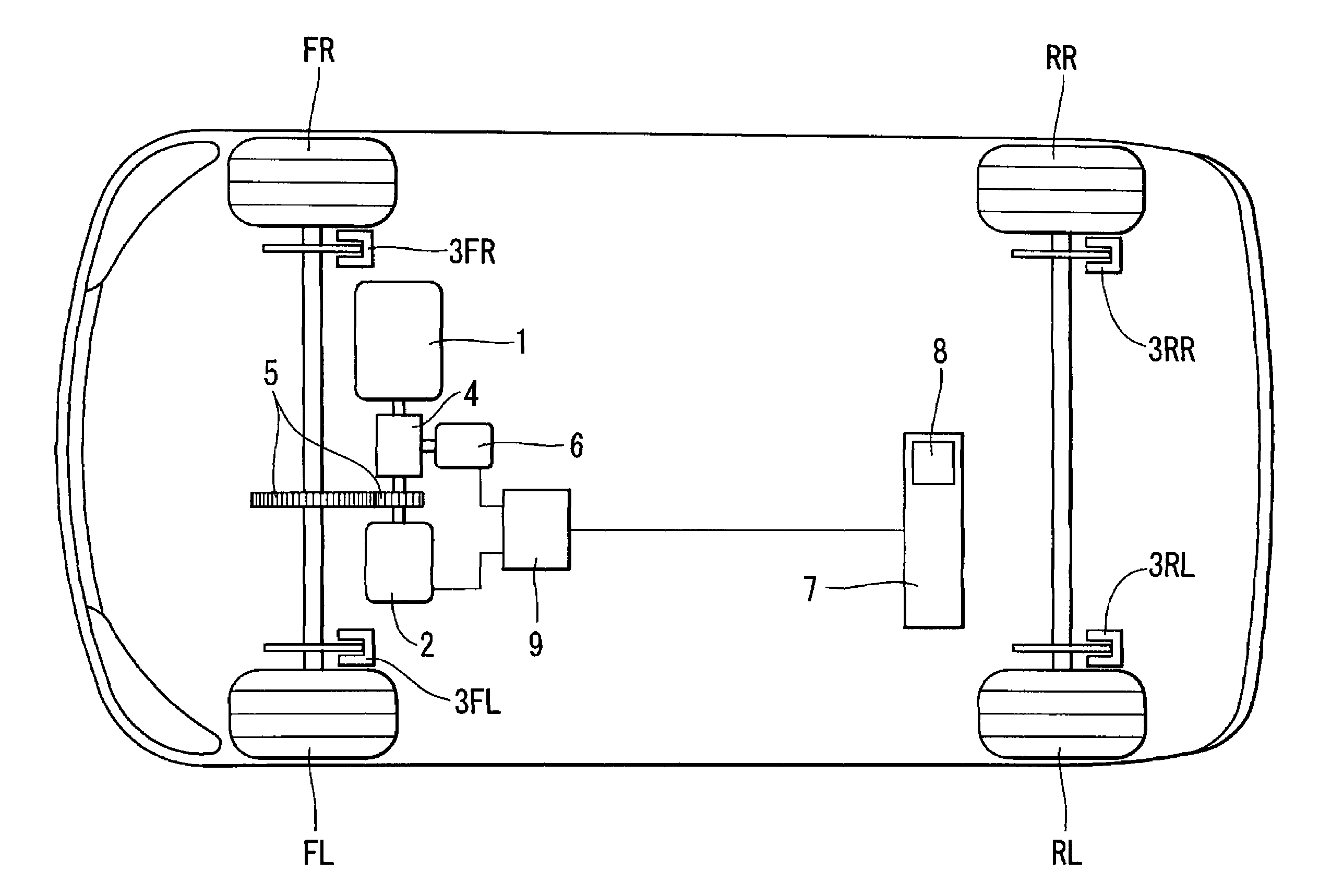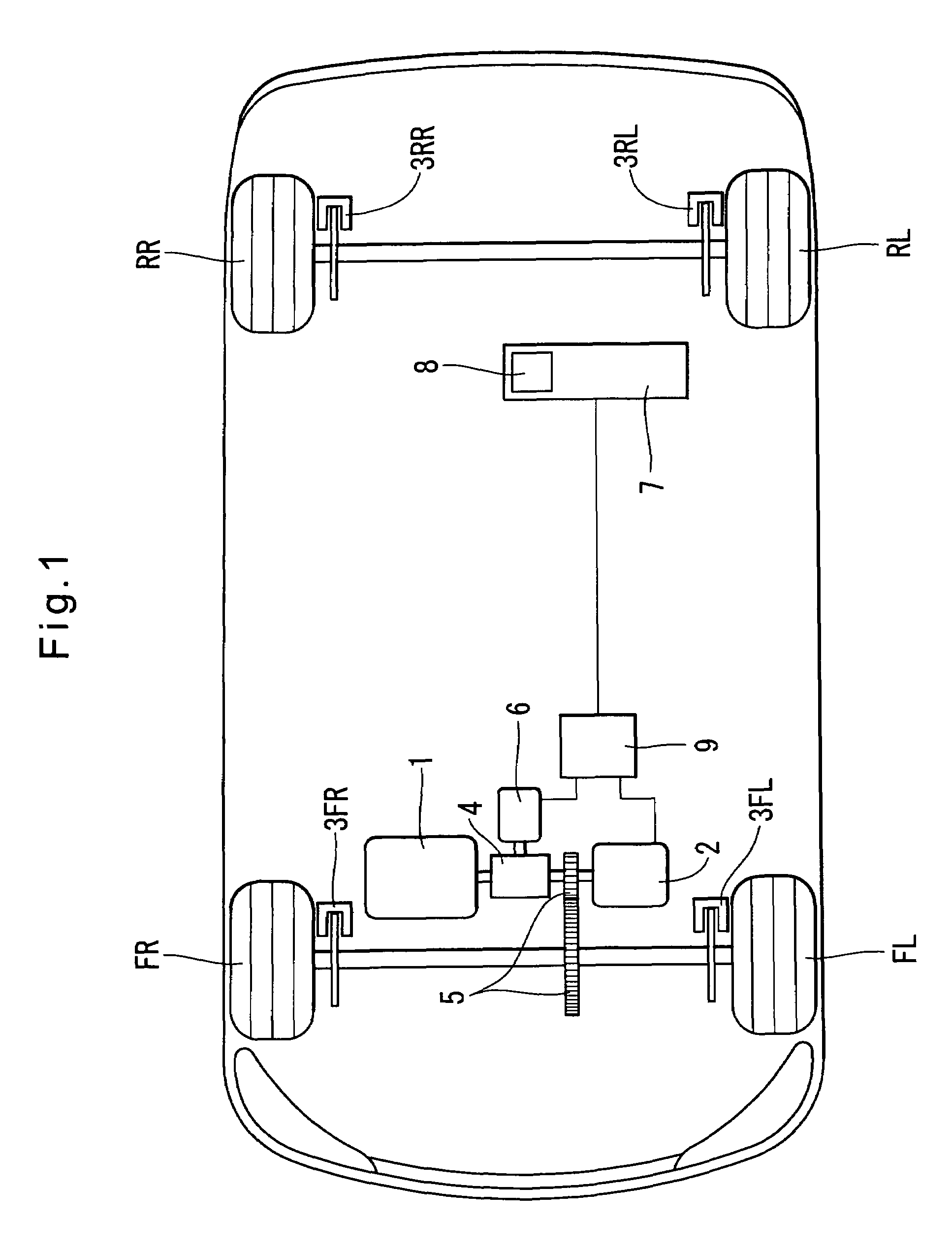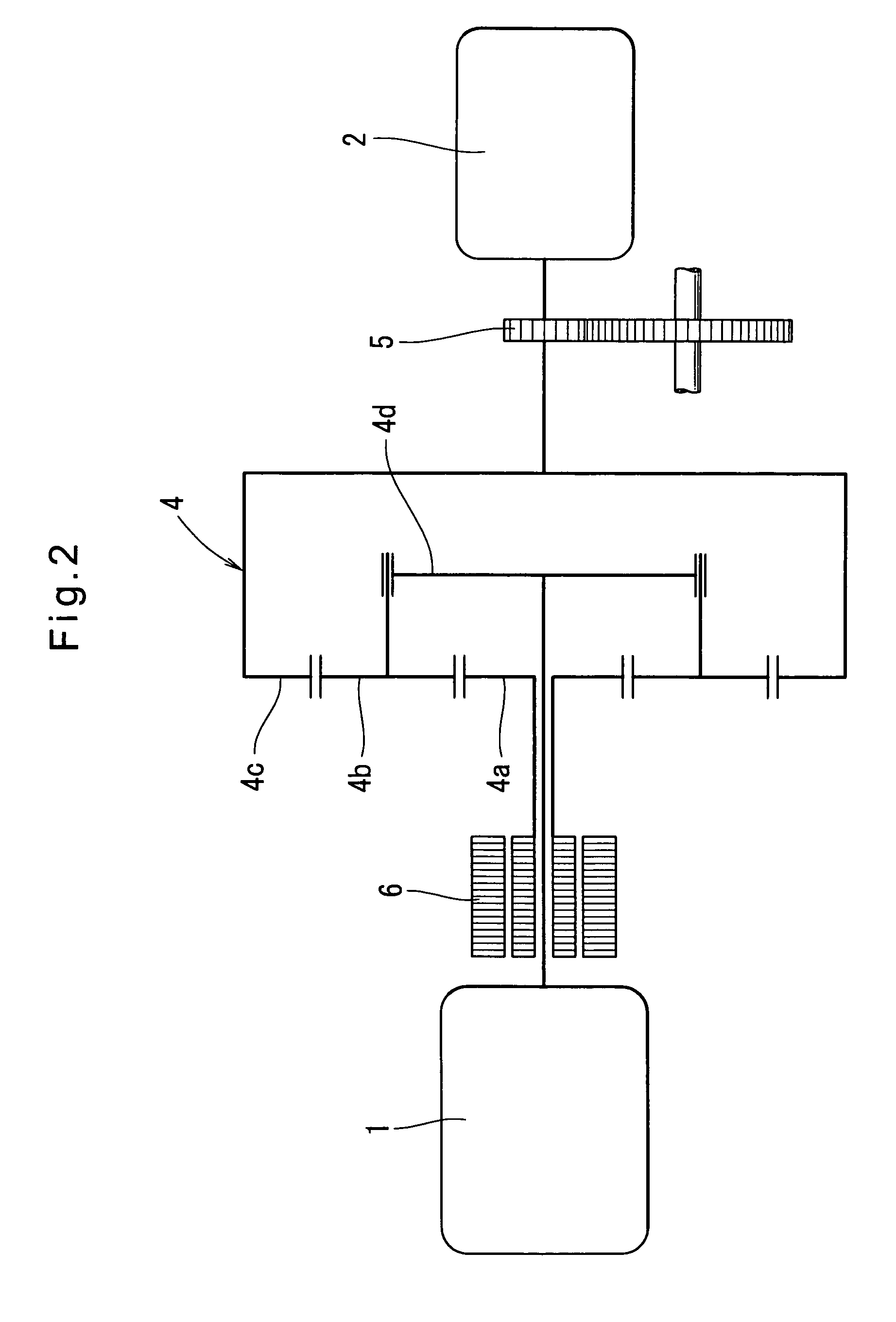Vehicle brake system
a brake system and vehicle technology, applied in the field of vehicle brake systems, can solve the problems of reducing frictional braking force, reducing regenerative braking force to zero, and taking a rather long time to reduce frictional braking force, so as to quickly eliminate any wheel locking tendency, reliably recover energy by regenerative braking, and quick reducing braking force
- Summary
- Abstract
- Description
- Claims
- Application Information
AI Technical Summary
Benefits of technology
Problems solved by technology
Method used
Image
Examples
Embodiment Construction
[0032]FIG. 1 schematically shows a vehicle including the brake system according to the present invention. The vehicle shown carries what is known as a hybrid drive system comprising an engine 1 and an electric motor 2. The brake system shown includes friction brake units 3FL, 3FR, 3RL and 3RR which are mounted to the front wheels FL and FR and the rear wheels RL and RR, respectively, to produce frictional braking force.
[0033]The engine 1 is connected to the front wheels FR and FL through a power split device 4 and reduction gears 5. As shown in FIG. 2, the power split device 4 comprises a sun gear 4a, planetary gears 4b that rotate about the sun gear 4a while meshing with the sun gear 4a, a ring gear 4c having internal gear teeth meshing with the planetary gears 4b, and a planet carrier 4d supporting the planetary gears 4b. The planetary carrier 4d is coupled to the engine 1, the ring gear 4c is coupled to the reduction gears 5, and the sun gear 4a is coupled to a generator 6. Thus,...
PUM
 Login to View More
Login to View More Abstract
Description
Claims
Application Information
 Login to View More
Login to View More - R&D
- Intellectual Property
- Life Sciences
- Materials
- Tech Scout
- Unparalleled Data Quality
- Higher Quality Content
- 60% Fewer Hallucinations
Browse by: Latest US Patents, China's latest patents, Technical Efficacy Thesaurus, Application Domain, Technology Topic, Popular Technical Reports.
© 2025 PatSnap. All rights reserved.Legal|Privacy policy|Modern Slavery Act Transparency Statement|Sitemap|About US| Contact US: help@patsnap.com



